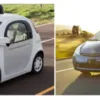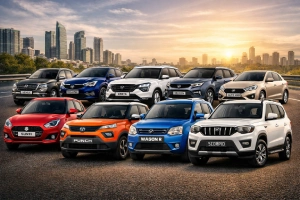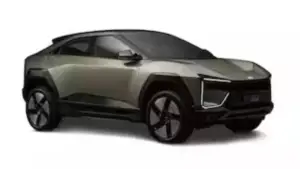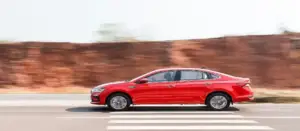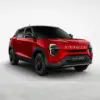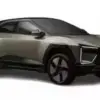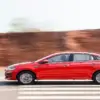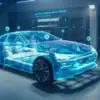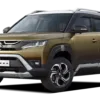In the era of smart mobility and self-driving vehicles, two technologies are leading the transformation in automotive safety and autonomy — ADAS (Advanced Driver Assistance Systems) and LiDAR (Light Detection and Ranging). As more automakers push toward autonomous driving and enhanced road safety, understanding the difference between ADAS and LiDAR becomes crucial.
While both technologies aim to improve vehicle awareness and driver response, they work in fundamentally different ways and serve different purposes. In this blog post, we’ll take a deep dive into what ADAS and LiDAR are, how they work, where they’re used, and which one is more beneficial for current and future vehicles.
Understanding ADAS (Advanced Driver Assistance Systems)
ADAS refers to a set of electronic systems that assist the driver in driving and parking functions. ADAS uses inputs from multiple sensors, such as:
- Cameras
- Radar
- Ultrasonic sensors
- Infrared sensors
- AI-powered processors
The system processes data to interpret surroundings and warn the driver — or take corrective action if necessary. It’s designed to enhance vehicle safety, reduce human error, and provide a smoother driving experience.
Key Features of ADAS:
- Lane Departure Warning (LDW)
Warns the driver if the car unintentionally drifts out of the lane without signaling. - Adaptive Cruise Control (ACC)
Automatically adjusts the vehicle’s speed to maintain a safe distance from the car ahead. - Blind Spot Monitoring (BSM)
Alerts the driver about vehicles in blind spots when changing lanes. - Automatic Emergency Braking (AEB)
Applies brakes automatically to avoid or reduce the severity of a collision. - Traffic Sign Recognition
Detects and displays speed limits and road signs in real-time. - Driver Drowsiness Detection
Monitors the driver’s behavior and alerts if fatigue or distraction is detected.
Examples of Cars with ADAS in India (2024-2025):
- Mahindra XUV700 (Level 2 ADAS)
- MG Astor
- Tata Safari 2023
- Hyundai Verna 2023
- Honda City Hybrid
ADAS is becoming more accessible even in mid-range vehicles, making it a practical feature for the Indian and global car market.
Understanding LiDAR (Light Detection and Ranging)
LiDAR is a remote sensing technology that uses laser pulses to measure distances to objects. It creates high-resolution 3D maps of the surroundings by calculating how long it takes for the laser to return after hitting an object.
How LiDAR Works:
- A LiDAR unit sends out thousands of laser beams per second.
- These lasers hit objects (cars, pedestrians, trees, etc.) and bounce back.
- The system calculates distance and shape with precision and maps a 360° image of the environment.
- It can differentiate between moving and stationary objects.
Applications of LiDAR in Automotive:
- 3D environmental mapping
- Object detection and avoidance
- High-definition localization for autonomous navigation
- Real-time obstacle tracking
Companies Using LiDAR in Cars:
- Waymo (Google’s self-driving project)
- Mercedes-Benz EQS
- BMW i7
- Audi A8
- Volvo EX90
LiDAR is especially critical for Level 3 to Level 5 autonomous vehicles where human intervention is minimal or absent.
ADAS vs LiDAR: In-Depth Comparison
| Category | ADAS | LiDAR |
|---|---|---|
| Technology | Sensor & camera-based | Laser-based remote sensing |
| Function | Assists human drivers | Enables autonomous navigation |
| Hardware | Camera, radar, ultrasonic | Rotating/micro solid-state LiDAR units |
| Precision | Good, limited in resolution | Extremely high spatial resolution |
| Cost | Affordable | Expensive |
| Weather Resistance | Can struggle in fog, rain | Better in darkness but affected by snow/rain |
| Mass Adoption | Common in mid-range vehicles | Limited to high-end and experimental vehicles |
| Power & Computing Needs | Moderate | High power and GPU usage |
| Autonomy Level Support | Level 1 and Level 2 | Level 3 to Level 5 autonomous driving |
ADAS: Benefits and Limitations
✅ Benefits of ADAS:
- Enhanced Safety: Helps reduce accidents by alerting or intervening before a crash.
- Driver Convenience: Features like adaptive cruise control and parking assist reduce fatigue.
- Cost-Effective: More affordable to implement, especially in budget-friendly cars.
- Insurance Discounts: Cars with ADAS often get lower insurance premiums.
❌ Limitations of ADAS:
- Limited to Assistive Roles: Not a replacement for the driver.
- Sensor Dependence: Performance drops in fog, heavy rain, or dirty sensors.
- No 3D Depth Perception: Cameras can’t create detailed 3D maps like LiDAR.
LiDAR: Benefits and Limitations
✅ Benefits of LiDAR:
- Accurate 3D Mapping: Offers unmatched detail of surroundings — essential for self-driving.
- Object Classification: Identifies pedestrians, animals, objects, and cars accurately.
- Works in Low-Light Conditions: Unlike cameras, it doesn’t need visible light.
- Supports Full Autonomy: Backbone of Level 3+ autonomous vehicle systems.
❌ Limitations of LiDAR:
- High Cost: A single LiDAR unit can cost hundreds to thousands of dollars.
- Weather Vulnerability: Performance may degrade in heavy fog or snow.
- Mechanical Wear & Tear: Rotating parts can wear out unless solid-state LiDAR is used.
- Bulky Design: Some LiDAR systems are large and hard to integrate discreetly.
ADAS vs LiDAR: Which One Is More Beneficial Today?
🛣️ For Mass-Market Vehicles (2025 and near future):
ADAS is the winner — because it:
- Is already integrated in budget and mid-range cars.
- Offers real-time driver assistance without requiring full autonomy.
- Significantly improves road safety with proven impact on accident reduction.
- Works well in mixed traffic environments (like in Indian cities) where full autonomy is still not viable.
🚘 For Premium, Self-Driving Cars:
LiDAR is essential — because:
- It provides the depth and accuracy needed for autonomous navigation.
- It eliminates dependency on human eyes and judgment.
- It can see through darkness and measure distances precisely.
- Companies like Waymo, Tesla (though Tesla controversially avoids LiDAR), and Apple are using or testing it for robotaxis.
Hybrid Systems: The Future of Vehicle Sensing
The automotive industry is now combining ADAS and LiDAR for a multi-sensor fusion approach. Here’s how:
- ADAS provides general safety and monitoring.
- LiDAR adds precise 3D spatial awareness.
- Radar supports speed and motion tracking.
- AI integrates all sensor data into decision-making.
This layered redundancy ensures fail-safe driving decisions, especially in full self-driving (FSD) scenarios.
Real-World Use Cases:
🚙 ADAS in India:
- Tata Harrier 2023: Offers ADAS Level 2 including blind spot monitoring, emergency braking, and lane assist.
- Honda City e:HEV: Hybrid with ADAS support such as collision mitigation and road departure mitigation.
- Hyundai Verna 2023: A budget sedan now equipped with ADAS — showing its trickle-down adoption.
🚗 LiDAR Global Examples:
- BMW i7: Uses LiDAR for enhanced environmental mapping and navigation in complex urban scenarios.
- Mercedes EQS: Offers Level 3 Drive Pilot, using LiDAR for autonomous driving on highways.
- Waymo Robotaxis: Fully dependent on LiDAR for 360° situational awareness and obstacle avoidance.
Expert Opinions and Industry Trends
- Elon Musk (Tesla): “LiDAR is a crutch.” Tesla relies on cameras and AI for its self-driving system.
- Volvo & Mercedes: Believe in LiDAR’s value and have integrated it into premium models.
- Indian Market: Favors ADAS due to cost and infrastructure. Autonomous cars with LiDAR aren’t viable here (yet).
By 2030, the blend of LiDAR + ADAS may become the global standard — as costs drop and software becomes smarter.
Conclusion: Choosing What’s Best for Your Needs
✅ Choose ADAS if:
- You want a safe, reliable car for everyday use.
- You’re not interested in full autonomy.
- Budget matters to you.
- You live in countries like India with unpredictable road conditions.
🤖 Choose LiDAR-equipped vehicles if:
- You want cutting-edge self-driving tech.
- You’re willing to invest in high-end cars.
- You need superior precision and safety for futuristic use cases.
Ultimately, both technologies are stepping stones toward a smarter, safer, and more autonomous future. They’re not competitors — but allies. As technology evolves, they will co-exist and work in harmony to change how we drive forever.
FAQs
Q1: Is ADAS enough for self-driving cars?
No. ADAS provides assistance but cannot navigate or drive a car autonomously without driver input.
Q2: Can LiDAR replace ADAS?
Not completely. LiDAR enhances awareness but needs software and decision-making systems — often integrated with ADAS for complete functionality.
Q3: Which is cheaper to implement in cars?
ADAS is much more affordable and suitable for widespread adoption.
Which One is More Beneficial for Cars in 2025?
✅ For Regular Drivers: ADAS is More Practical
- Lower cost
- Already available in many mid-range cars like Tata Harrier, Hyundai Verna, and Mahindra XUV700
- Improves safety without full autonomy
- Easy adoption in Indian driving conditions
🤖 For Full Autonomy: LiDAR Leads the Future
- Crucial for Level 3-5 autonomous vehicles
- Ensures machine-level accuracy
- Ideal for self-driving taxis and premium vehicles (e.g., BMW i7, Audi A8)
Expert Verdict:
While LiDAR provides cutting-edge mapping for self-driving, ADAS is currently more beneficial for the mass market. It enhances safety, reduces driver fatigue, and is rapidly being adopted across all car segments in India and globally.
In the near future, a hybrid model combining both ADAS and LiDAR may become the industry standard — offering the best of both worlds.
Conclusion:
ADAS and LiDAR are not rivals but complementary technologies. For now, if you’re buying a car in 2025, focus on ADAS-equipped vehicles. But keep an eye on LiDAR, as it’s the key to unlocking the dream of cars.



